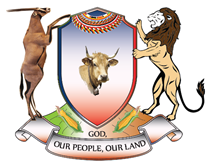The name Samburu Land refers to the Samburu people who form the majority of the population. However, there are significant populations of other communities, notably the Turkana, Rendille, Borana and Pokot; the urban centres hold a mixture of people from all over Kenya.
About Samburu County
As findings from the shores of Lake Turkana prove, the region has been inhabited since the dawn of the very first humans. In the past few centuries, the land has been roamed by various pastoralist peoples who constantly competed for pasture, water and animals.
In 1886, the first Europeans to travel through Samburu County, on their way to Lake Turkana, were the Hungarian Count Samuel Teleki and his Austrian companion Ludwig von Höhnel who gave the biggest permanent desert lake the name ‘Lake Rudolf’ (after Prince Rudolf, then archduke of the Austria-Hungary Empire). The name stuck until the 1970s, when it was officially renamed Lake Turkana.
The next Europeans to follow Teleki and von Höhnel were big game hunters who set camp at the animal-rich banks of the Ewaso Nyiro.
Development
Much of the dry vast north has always lagged behind in terms of development, one of the carryover legacies of British administration which shut off the region.When it was still part of the Northern Frontier District in colonial Kenya, Samburu Land could only be accessed after securing a special permit, and its remoteness was the reason Kenya’s first president, Jomo Kenyatta, was detained in Maralal as the British administration and Kenyan nationalists negotiated the terms of independence.
Now that Samburu is one of the 47 semi-autonomous counties, the local control over many affairs within the region will unleash the huge economic potential of the region, most obvious with a great future in tourism, among other sectors of the economy. A new tarmac highway being built from Isiolo to Ethiopia is likely to usher in a period of greater accessibility and security, and Samburu, like all the other counties in northern Kenya, will benefit mightily from this.
Our People
Samburu’s peoples are pastoralists whose life has been revolving around the wellbeing of their goats, sheep, cattle, and in the more arid areas, camels. The Samburu are culturally related to the Maasai, and show a specifically rich and picturesque heritage of artful beadwork, songs and dances. Both women and warriors wear red dresses, but it is only the moran, the young fighters, who braid their hair as the skin is smeared with ochre, displaying an unmatched beauty of traditional Africa.
The Samburu share their Nilotic roots with the Pokots, their neighbors to the west, and the Turkana to the northwest, whereas Borana in the southeast and Rendille in the northeast are both of Cushitic lineage. Yet, culturally, the Rendille are the closest to the Samburu and practice almost identical traditions.

